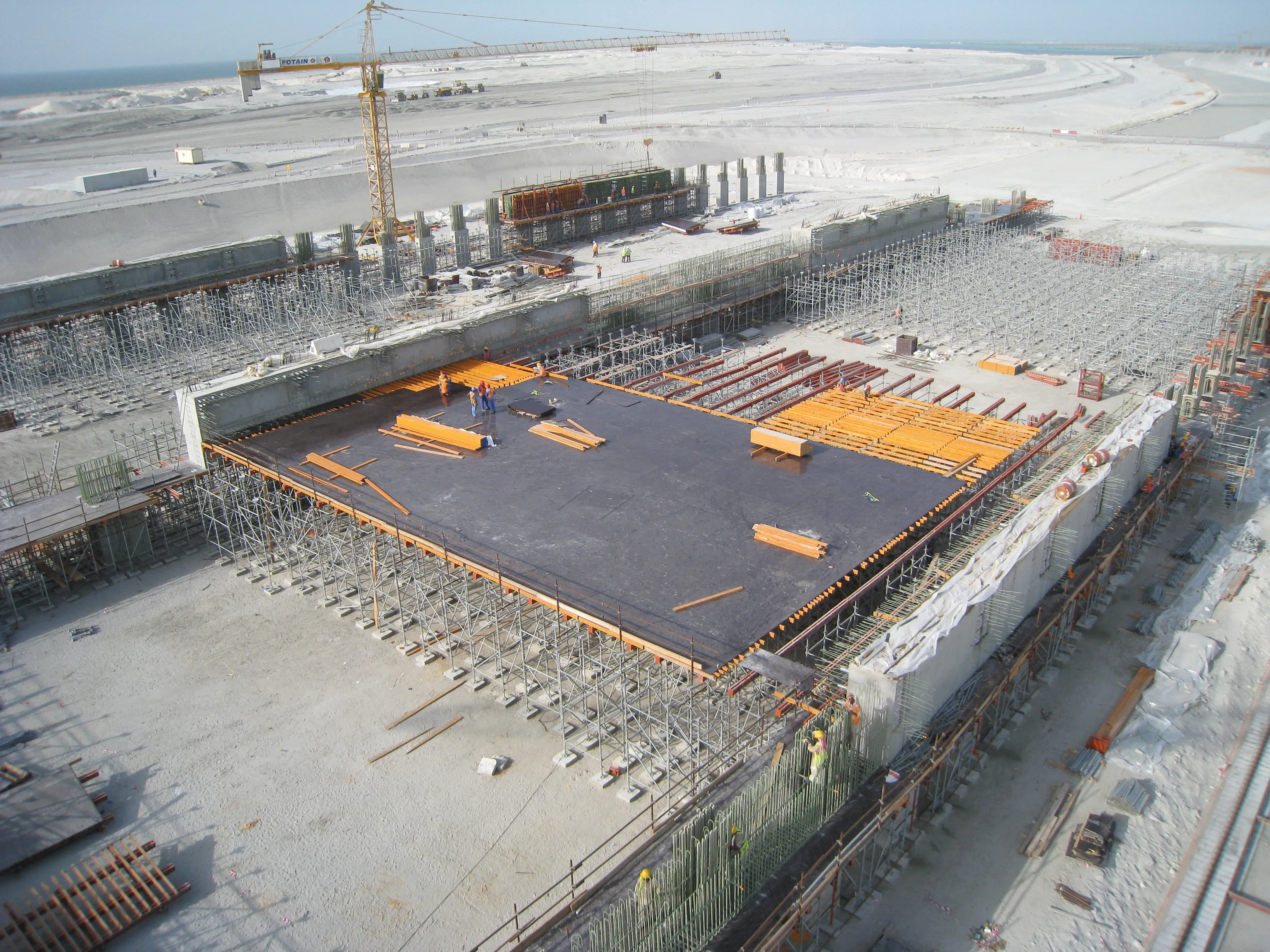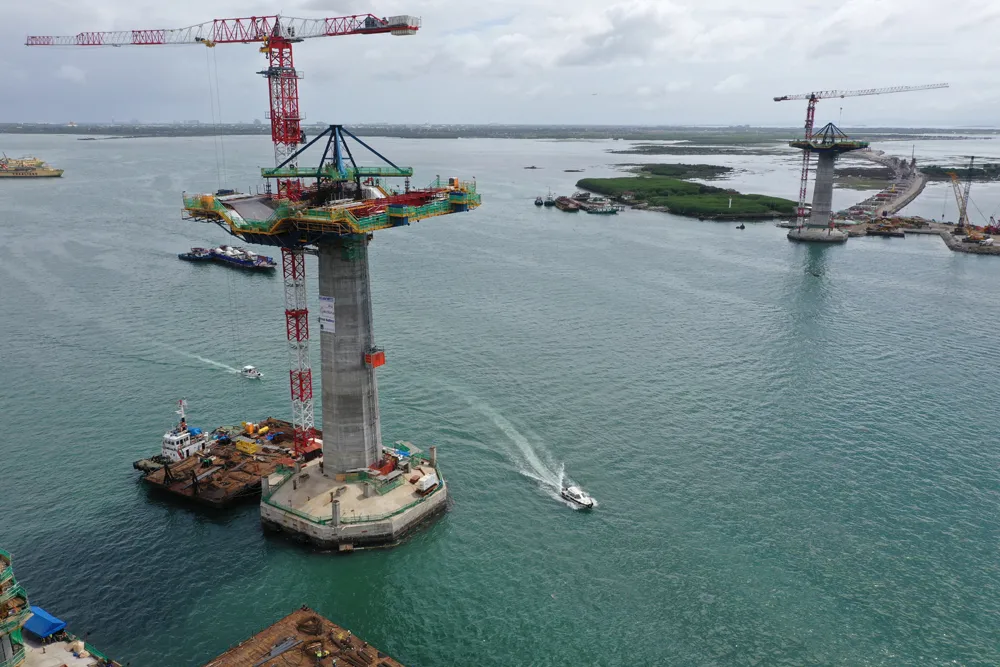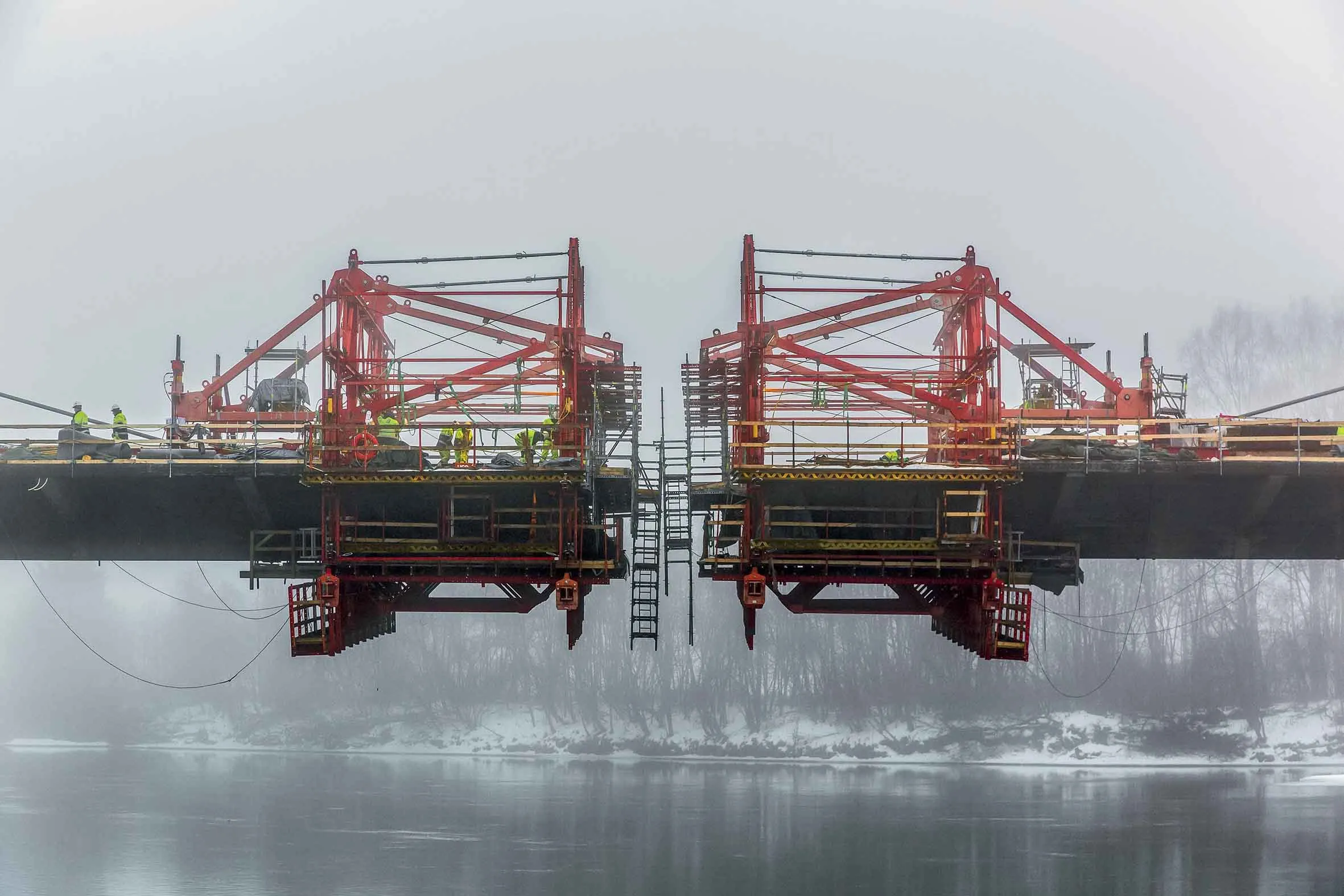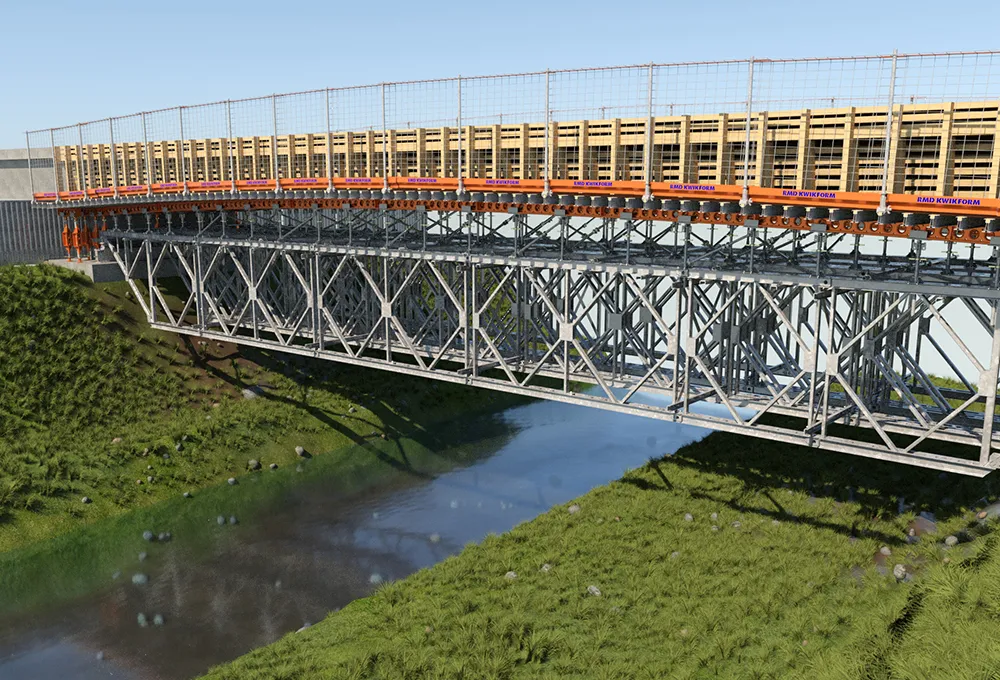A new bridge, said to be the largest in the United Arab Emirates (UAE) in terms of area, is being constructed as part of a major highway project. The US$550 million Saadiyat Expressway project, which involves Leighton Construction (Abu Dhabi), related to one of Australia's largest contracting groups, in constructing a ten-lane, 6.5km long highway to link the UAE's main city, with an exclusive island lying just offshore.
February 24, 2012
Read time: 4 mins

A new bridge, said to be the largest in the United Arab Emirates (UAE) in terms of area, is being constructed as part of a major highway project.
The US$550 million Saadiyat Expressway project, which involves Leighton Construction (Abu Dhabi), related to one of Australia's largest contracting groups, in constructing a ten-lane, 6.5km long highway to link the UAE's main city, with an exclusive island lying just offshore.
Conceived and driven by the Abu Dhabi Tourism Development and Investment Company, the arterial route, together with its interchanges, side roads and 1.6km of bridge decks, is scheduled to be complete in time for the inaugural Abu Dhabi Grand Prix (1 November, 2009), which could well decide the 2009 Formula One World Championship.
In January319 RMD Kwikform Middle East's engineers started the design process to help contractor Leighton construct the eight in situ concrete box girder bridges and a tunnel required for the expressway.
Leighton Construction (Abu Dhabi) decided to award RMD Kwikform the contract to supply the formwork and falsework for all of the structures on this critical project as a result of the company's reputation and its ability to respond to a complex series of requirements.
These, says RMD, included having the flexibility of service to not only undertake all of the logistical planning and detailed design for each of the different locations, but also to offer the alternative of hire and purchase as appropriate to each application. While the vast majority of the equipment is being sold to Leighton Construction, the formwork for bridge B31 and all the top slab support along the 1.6 km of bridges will be rented.
At 180m long and 80m wide, the Golf Land Bridge will not only be the biggest bridge on the Saadiyat Island Expressway, but also the largest bridge in terms of area built to date in the UAE.
Andy Teesdale, RMD Kwikform's contract manager for the area, remarks on the size of the project saying: "This is a massive undertaking, where we are working in partnership with Leighton Construction to offer the contractor the level of service essential to keep the reinforced concrete construction for all the structures on track.
"Aside from the fact that the work will see a staggering 215,000m³ of our Rapidshor falsework either purchased or hired to the client, our involvement also involves responsibility for design detailing and site safety. Programming of the work is critical for a lot of reasons, not least the seasonal variation in temperature: because it has such a dramatic effect on the rate at which the concrete hardens and gains strength.
"We normally design for an ambient temperature of 25°C, but this can drop to around 15°C in winter here, which slows the cure and could have potentially disastrous implications if we do not take account of the fact for the formwork design."
The decks to the bridges are all being designed as concrete box girders, with the 2m deep section being divided into a series of cells. The formwork has been planned and detailed so that the main elements can be pre-assembled on the ground, lifted into position and then moved again with as little adjustment as possible.
The most technically challenging requirement for RMD Kwikform to date has been the design and manufacture of special steel forms to cast the complex geometric shapes to a number of the pier heads.
These were fabricated from steel, not to enable high repetitions, but to cope with the very high concrete pressures and variations in profile.
Square on plan, the special shutters measure 2,800mm by 2,600 mm and have a double curvature. The design loading for these special steel forms means only four re-uses as the mix is poured, compacted and hardens.
For the 870m long tunnel that traverses the line of the main highway, once the base slab is laid, RMD Kwikform is to supply its Alform beams and Superslim soldiers to cast the walls. Then for the roof to the tunnel, the method of construction switches to the use of the specialist's table-forms. These will be assembled using RMD Kwikform's Alshor Plus system, making up 30m long sections, which can be struck and advanced as a single unit as soon as the concrete has gained sufficient strength. The cut-and-cover structure will then be backfilled.
Although at 27km², Saadiyat Island is only half the size of Bermuda, but is considered to represent one of the most important development opportunities in Abu Dhabi's history. The completion of the new expressway will help open up this natural idyll as an international tourism destination and residential centre.
The US$550 million Saadiyat Expressway project, which involves Leighton Construction (Abu Dhabi), related to one of Australia's largest contracting groups, in constructing a ten-lane, 6.5km long highway to link the UAE's main city, with an exclusive island lying just offshore.
Conceived and driven by the Abu Dhabi Tourism Development and Investment Company, the arterial route, together with its interchanges, side roads and 1.6km of bridge decks, is scheduled to be complete in time for the inaugural Abu Dhabi Grand Prix (1 November, 2009), which could well decide the 2009 Formula One World Championship.
In January
Leighton Construction (Abu Dhabi) decided to award RMD Kwikform the contract to supply the formwork and falsework for all of the structures on this critical project as a result of the company's reputation and its ability to respond to a complex series of requirements.
These, says RMD, included having the flexibility of service to not only undertake all of the logistical planning and detailed design for each of the different locations, but also to offer the alternative of hire and purchase as appropriate to each application. While the vast majority of the equipment is being sold to Leighton Construction, the formwork for bridge B31 and all the top slab support along the 1.6 km of bridges will be rented.
At 180m long and 80m wide, the Golf Land Bridge will not only be the biggest bridge on the Saadiyat Island Expressway, but also the largest bridge in terms of area built to date in the UAE.
Andy Teesdale, RMD Kwikform's contract manager for the area, remarks on the size of the project saying: "This is a massive undertaking, where we are working in partnership with Leighton Construction to offer the contractor the level of service essential to keep the reinforced concrete construction for all the structures on track.
"Aside from the fact that the work will see a staggering 215,000m³ of our Rapidshor falsework either purchased or hired to the client, our involvement also involves responsibility for design detailing and site safety. Programming of the work is critical for a lot of reasons, not least the seasonal variation in temperature: because it has such a dramatic effect on the rate at which the concrete hardens and gains strength.
"We normally design for an ambient temperature of 25°C, but this can drop to around 15°C in winter here, which slows the cure and could have potentially disastrous implications if we do not take account of the fact for the formwork design."
The decks to the bridges are all being designed as concrete box girders, with the 2m deep section being divided into a series of cells. The formwork has been planned and detailed so that the main elements can be pre-assembled on the ground, lifted into position and then moved again with as little adjustment as possible.
The most technically challenging requirement for RMD Kwikform to date has been the design and manufacture of special steel forms to cast the complex geometric shapes to a number of the pier heads.
These were fabricated from steel, not to enable high repetitions, but to cope with the very high concrete pressures and variations in profile.
Square on plan, the special shutters measure 2,800mm by 2,600 mm and have a double curvature. The design loading for these special steel forms means only four re-uses as the mix is poured, compacted and hardens.
For the 870m long tunnel that traverses the line of the main highway, once the base slab is laid, RMD Kwikform is to supply its Alform beams and Superslim soldiers to cast the walls. Then for the roof to the tunnel, the method of construction switches to the use of the specialist's table-forms. These will be assembled using RMD Kwikform's Alshor Plus system, making up 30m long sections, which can be struck and advanced as a single unit as soon as the concrete has gained sufficient strength. The cut-and-cover structure will then be backfilled.
Although at 27km², Saadiyat Island is only half the size of Bermuda, but is considered to represent one of the most important development opportunities in Abu Dhabi's history. The completion of the new expressway will help open up this natural idyll as an international tourism destination and residential centre.









